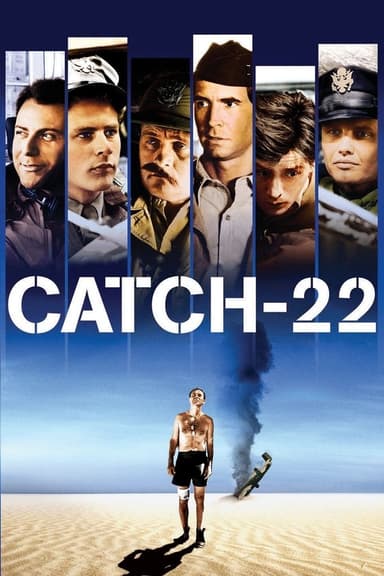
Myra Breckinridge
1970 • Comedy, Drama • R
Myron Breckinridge flies to Europe to get a sex-change operation and is transformed into the beautiful Myra. She travels to Hollywood, meets up with her rich Uncle Buck and, claiming to be Myron's widow, demands money. Instead, Buck gives Myra a job in his acting school. There, Myra meets aspiring actor Rusty and his girlfriend, Mary Ann. With Myra as catalyst, the trio begin to outrageously expand their sexual horizons.
Runtime: 1h 34m
Why you should read the novel
Gore Vidal's novel Myra Breckinridge stands as a daring exploration of gender, sexuality, and Hollywood’s illusions—blending satire, humor, and searing social commentary. The book offers a depth and intellectual sharpness that’s difficult to convey on screen, rich with witty prose, layered characters, and razor-sharp observations on American pop culture. Reading the novel allows for a fuller experience of Vidal's unique literary voice and his provocative take on the cultural excesses of the late 1960s.
Experiencing Myra Breckinridge as a book immerses readers in complex gender dynamics and psychological nuance, providing context and interior monologue that the film can only hint at. The written form allows Vidal to express Myra’s innermost thoughts and schemes, making her a more compelling and enigmatic protagonist. Readers also gain a better understanding of the satirical targets and cultural critique that Vidal so meticulously weaves into every page.
For those intrigued by bold narratives and genre-defying storytelling, the novel offers a richer, more sophisticated experience than the movie. Rather than relying on shock value or camp visuals, Vidal’s prose invites readers to question social norms and stereotypes. Picking up the book ensures a more thought-provoking and rewarding encounter with Myra Breckinridge’s unique and subversive world.
Adaptation differences
One prominent difference lies in the narrative structure: Gore Vidal's novel is written in the first person, with Myra narrating in a mix of diary entries and inner monologue, giving readers intimate access to her thoughts. The film adaptation, however, presents events more externally, losing much of Myra’s introspective commentary and the sophisticated satire present in the source material.
The film greatly amplifies the camp and sexual shock elements, relying on over-the-top visuals and explicit scenes, at times overshadowing the deeper layers of social critique found in the book. Whereas the novel utilizes wit and subtext to address gender and sexuality, the movie often resorts to sensationalism, sacrificing the subtlety and intelligence of Vidal’s writing for visual provocation.
Another major difference involves character portrayal and development. In the novel, Myra is a nuanced, sharply intelligent, and manipulative character, and her motivations and inner conflicts are explored in detail. The film version reduces much of this complexity, portraying Myra more as a caricature than a fully realized individual, thus limiting the satirical impact.
Finally, the movie alters several plot points and omits entire subplots and characters that provide crucial context and depth in the novel. The film’s ending also differs significantly, choosing a more abrupt and ambiguous conclusion rather than the thoughtfully constructed denouement provided by Vidal. These changes result in a superficial experience that misses much of the original work’s nuance and commentary.
Myra Breckinridge inspired from
Myra Breckinridge
by Gore Vidal






